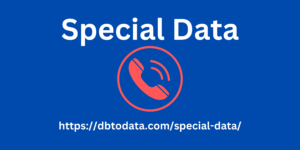|
|
The Payment Services Directive (PSD 2) was approved way back in November 2015. Starting from September 14th, all companies within the EU will have to comply with its rules and content. An important aspect of this directive, which has attracted the attention of many, involves Strong Customer Authentication (SCA).The goal of SCA is to minimize the risk of fraudulent transactions and, in general, make online payments safer . This measure will change the way online payments are made for over 300 million European consumers.The rules that are part of the SCA, in fact, will mean that European consumers will have to use two-factor authentication ( 2FA ). When the deadline expires, businesses will need to be ready to meet these new requirements and obligations.Essentially, a second factor , such as a password or fingerprint , will be needed before the transaction is completed.
This, at least for the moment, means two-factor authentication. If e-commerce Special Data companies do not implement these changes, banks will automatically reject payments that do not meet two-factor authentication criteria.Some cases exempt from 2FAThere will however be some exemptions from these measures. Recurring direct debits will not be affected by the regulation. Contactless payments and in-person card payments will also remain exempt.Additionally, if a customer will regularly purchase from a particular merchant, 2FA may only be needed initially . After that, on subsequent occasions, the customer will be whitelisted and will not need to repeat the process.2FA: Potential problemsThere are 6,000 banks in Europe. If everyone interpreted the SCA rules in their own way, the result, both for consumers and traders, could be very inconsistent and confusing.After all, what is meant by “ second factor ”?The consumer may be required to provide secondary authentication such as sound of voice , facial recognition , a PIN number , fingerprint, and other means of biometric authentication. The requirement is that the client provides authentication according to “ something I am, something I have, or something I know “.In order to address this upcoming regulatory addition in digital payments, the payments industry will need to build the right software to address 2FA authentication .

The payments company Stripe has already taken action in this regard.Secondary and tertiary authenticationRecently, the company launched Stripe Billing, a product that appears to be geared towards the new regulation. Stripe says this will make compliance with two-factor authentication rules easier for online subscriptions.The press release states that the product “will help businesses precisely identify which charges require SCA and send customizable emails to subscribers when additional authentication is required, reducing customer attrition and therefore also revenue loss” .It will obviously be necessary for payment service providers to work with banks in an effort to ensure a smooth transition, given the importance of banking systems in the process of interpreting the Strong Customer Authentication rules.
|
|
